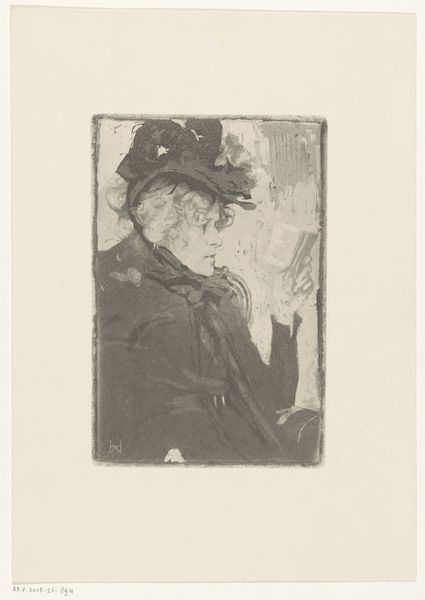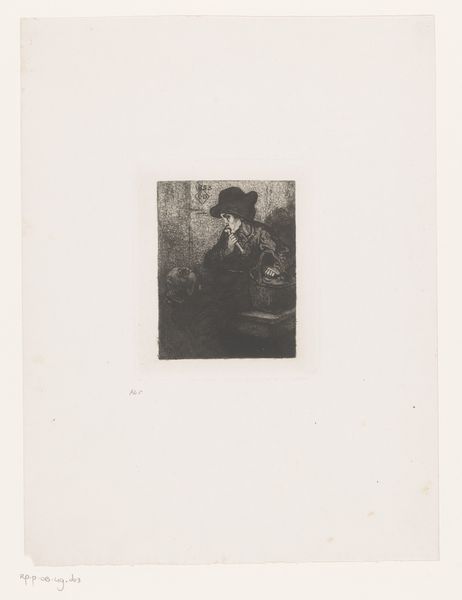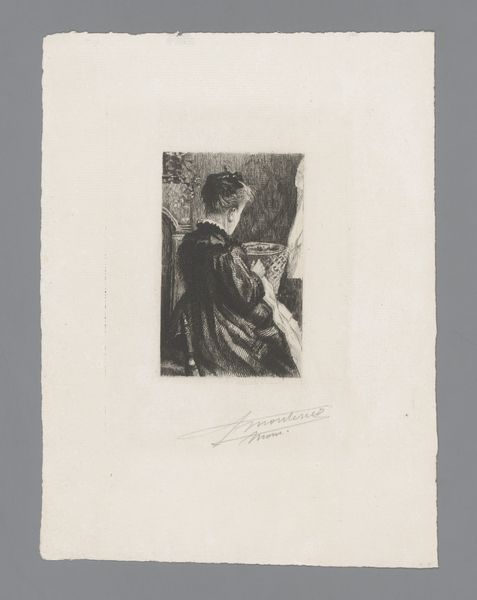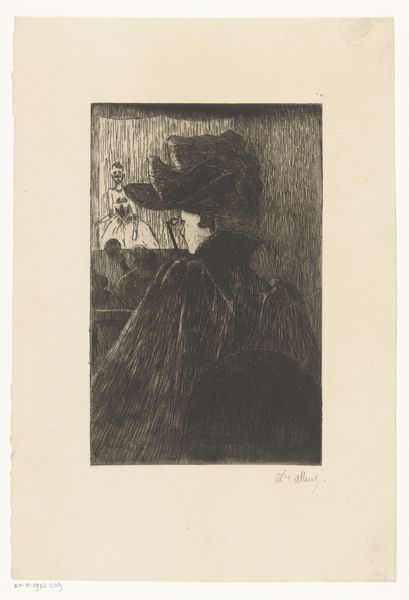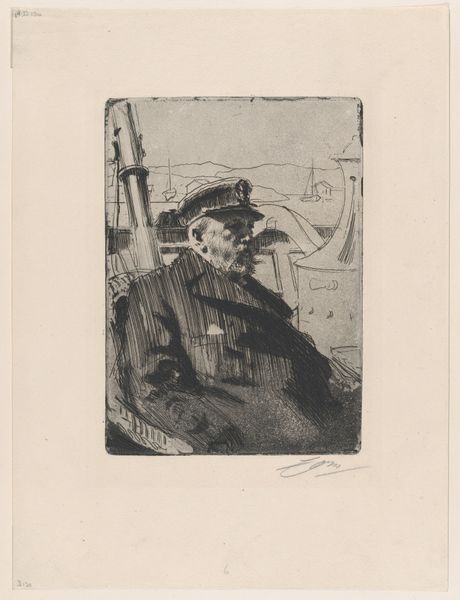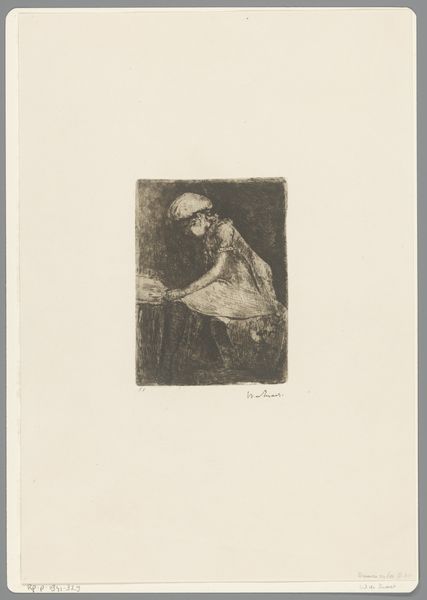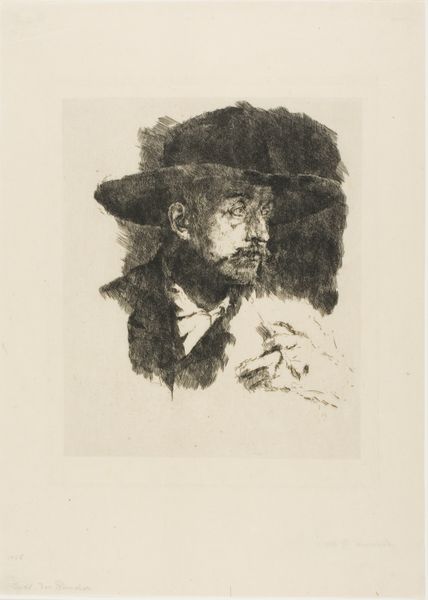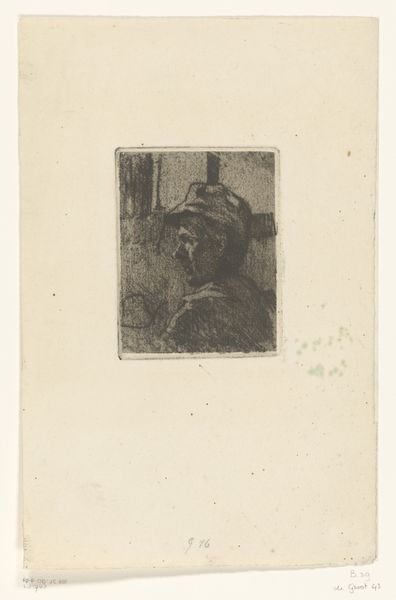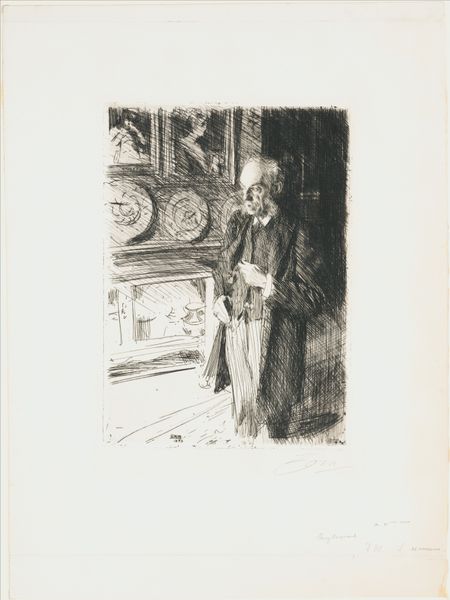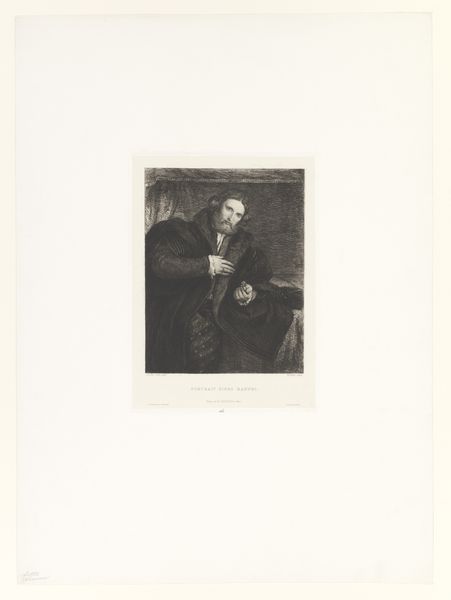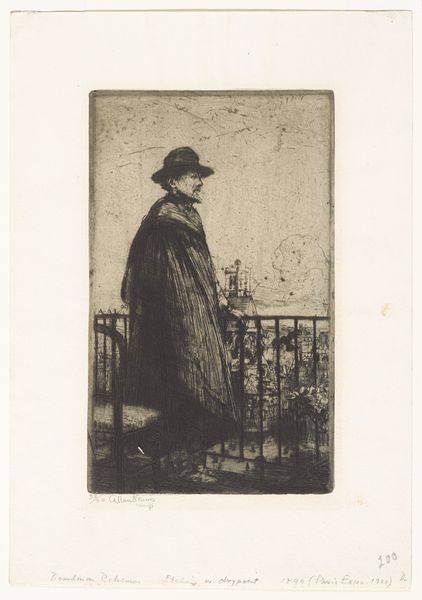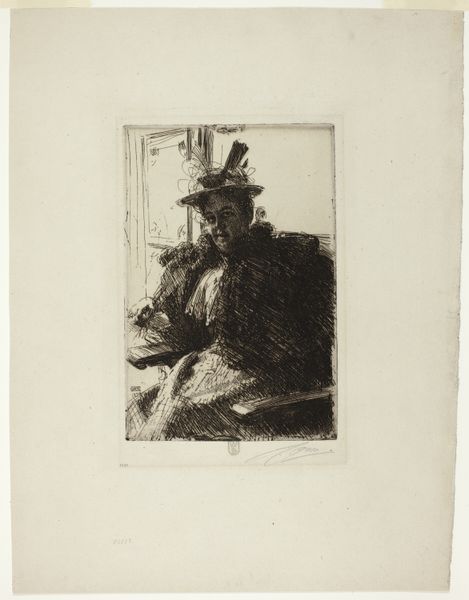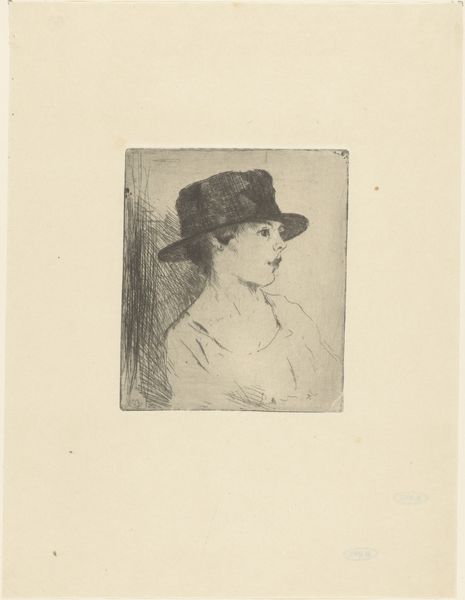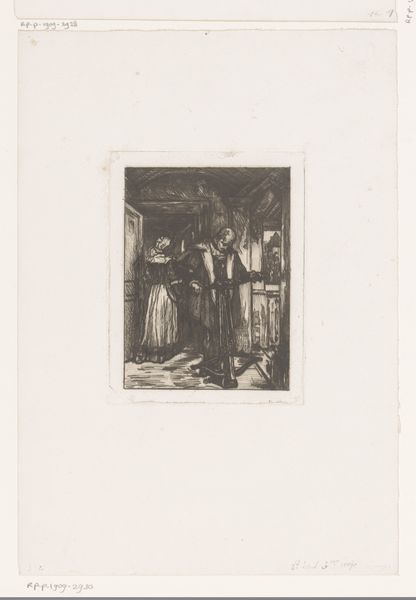
Dimensions: Plate: 7 7/8 × 5 1/2 in. (20 × 14 cm) Sheet: 15 5/8 × 12 1/4 in. (39.7 × 31.1 cm)
Copyright: Public Domain
Curator: Here we have "Olga Bratt," an etching by Anders Zorn, created in 1892. Editor: Right away, I'm struck by how intimate it feels. The limited palette makes me feel like I'm peeking in on a private moment. There's a quiet melancholy about her... Curator: Absolutely. Zorn was a master of capturing subtle emotion. It is fascinating to consider this work in the context of late 19th-century Swedish art, and the rise of portraiture within that cultural framework. These pieces, showcased prominently in galleries, helped shape public perception. Editor: Do you think the texture helps with that sense of immediacy? You can practically feel the burr of the etching needle, it makes me want to take up a pencil. Curator: Definitely! And notice how the background almost dissolves? It places sole focus on the sitter, emphasizing her as an individual. Zorn employed this technique often. Editor: You know, I can almost feel the air around her. Like the breath she is holding! Makes me think of trying to capture my sister in a portrait, but she just wouldn't stand still... the magic in a static work of art always kind of stuns me. Curator: Zorn was well-connected with his portraiture subjects, many of whom were wealthy patrons and members of high society, and you see it in the work he creates. But beyond status, it is interesting to think about the impact of representing particular individuals, like Olga, at this moment in art history, and what it meant culturally at the time to create visibility through portraiture. Editor: The social dynamics are fascinating, how artistic trends intersect with the broader political landscape... I like imagining what Olga would think of all this dissection of a single moment, frozen in ink so long ago. Curator: Exactly! The portrait’s social life, so to speak, outlives the sitter themselves, continually evolving and being shaped by present audiences, like us. Editor: Art, an immortal dance between artist, subject and observer. What a thought.
Comments
No comments
Be the first to comment and join the conversation on the ultimate creative platform.
